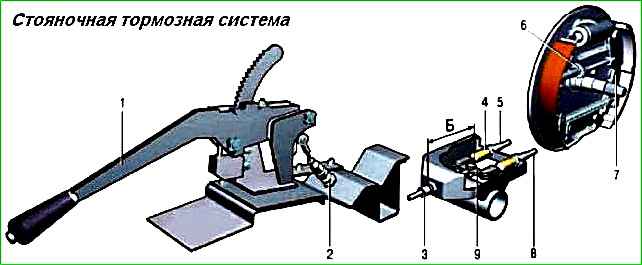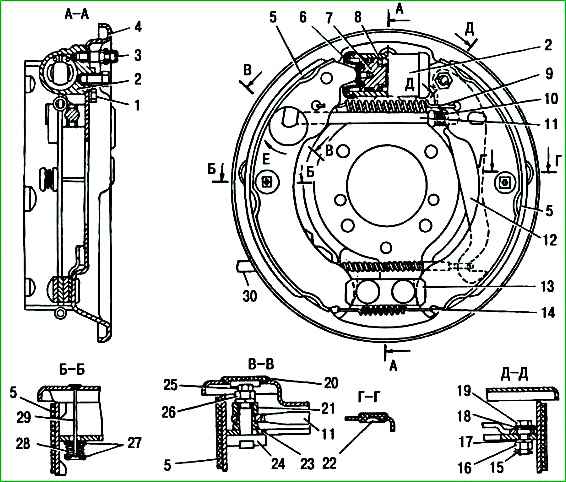If, when braking the car with the parking brake, lever 1 (see Fig. 1) with a force of 600 N (60 kgf) or more applied to it is fixed on the uppermost teeth of the sector, then the drive should be adjusted in the following order:

- set the drive lever to the lowest position;

- - remove plugs 20 (see Fig. 2) in the brake mechanisms of the rear wheels.
Using a 17 mm star wrench, loosen the nut securing the eccentric of the adjusting mechanism of one of the brakes by 1.0-1.5 turns;
- - eliminate the gap between the expansion link 11 and the lever 12, for which, using a special tubular wrench measuring 9 mm, turn the eccentric bolt 25 in the direction indicated by the arrow until rotation resistance is felt, which is associated with the expansion of the pads (beginning the movements of the blocks can also be determined through the inspection windows in the shield);
- tighten the eccentric fastening nut to a torque of 24-35 Nm (2.4-3.5 kgf m) in the position where the pads begin to decompress.
In this case, using a 9 mm wrench, you should hold the eccentric bolt 25 from turning;
- - adjust the position of the expansion link 11 in the other brake mechanism in a similar way;
- - install plugs in the brake mechanisms;
- - check for gaps between the ends of cables 5 (see Fig. 1) and 8 and the depressions on the equalizer 9.
Gaps can be eliminated by tightening the cable fastening nuts on bracket 4.
Adjustment should be made in such a way that after adjustment the equalizer is at distance “B” from the front wall of the bracket and perpendicular to the longitudinal axis of the car.
With a correctly adjusted parking brake drive, the drive lever under a force of 600 N (60 kgf) should not move more than 15 teeth of the locking mechanism.
You can also see the adjustment of the parking brake drive in the article - “Parking brake system GAZ-2705”





